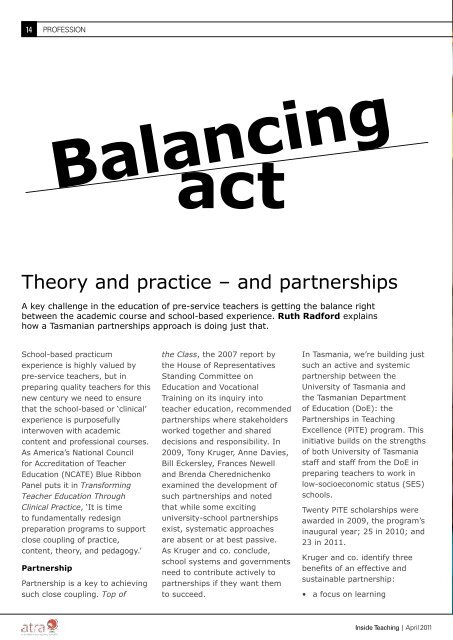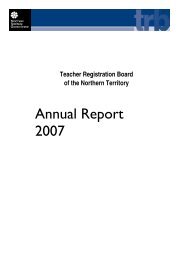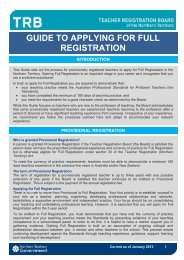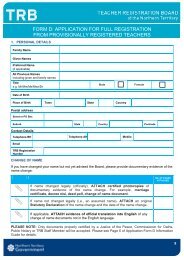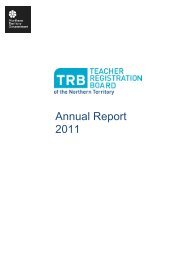First year out Five top tips from Phil Beadle Teacher preparation ...
First year out Five top tips from Phil Beadle Teacher preparation ...
First year out Five top tips from Phil Beadle Teacher preparation ...
You also want an ePaper? Increase the reach of your titles
YUMPU automatically turns print PDFs into web optimized ePapers that Google loves.
14 PROFESSION PROFESSION 15<br />
School-based practicum<br />
experience is highly valued by<br />
pre-service teachers, but in<br />
preparing quality teachers for this<br />
new century we need to ensure<br />
that the school-based or ‘clinical’<br />
experience is purposefully<br />
interwoven with academic<br />
content and professional courses.<br />
As America’s National Council<br />
for Accreditation of <strong>Teacher</strong><br />
Education (NCATE) Blue Ribbon<br />
Panel puts it in Transforming<br />
<strong>Teacher</strong> Education Through<br />
Clinical Practice, ‘It is time<br />
to fundamentally redesign<br />
<strong>preparation</strong> programs to support<br />
close coupling of practice,<br />
content, theory, and pedagogy.’<br />
Partnership<br />
Balancing<br />
Partnership is a key to achieving<br />
such close coupling. Top of<br />
act<br />
Theory and practice – and partnerships<br />
A key challenge in the education of pre-service teachers is getting the balance right<br />
between the academic course and school-based experience. Ruth Radford explains<br />
how a Tasmanian partnerships approach is doing just that.<br />
the Class, the 2007 report by<br />
the House of Representatives<br />
Standing Committee on<br />
Education and Vocational<br />
Training on its inquiry into<br />
teacher education, recommended<br />
partnerships where stakeholders<br />
worked together and shared<br />
decisions and responsibility. In<br />
2009, Tony Kruger, Anne Davies,<br />
Bill Eckersley, Frances Newell<br />
and Brenda Cherednichenko<br />
examined the development of<br />
such partnerships and noted<br />
that while some exciting<br />
university-school partnerships<br />
exist, systematic approaches<br />
are absent or at best passive.<br />
As Kruger and co. conclude,<br />
school systems and governments<br />
need to contribute actively to<br />
partnerships if they want them<br />
to succeed.<br />
In Tasmania, we’re building just<br />
such an active and systemic<br />
partnership between the<br />
University of Tasmania and<br />
the Tasmanian Department<br />
of Education (DoE): the<br />
Partnerships in Teaching<br />
Excellence (PiTE) program. This<br />
initiative builds on the strengths<br />
of both University of Tasmania<br />
staff and staff <strong>from</strong> the DoE in<br />
preparing teachers to work in<br />
low-socioeconomic status (SES)<br />
schools.<br />
Twenty PiTE scholarships were<br />
awarded in 2009, the program’s<br />
inaugural <strong>year</strong>; 25 in 2010; and<br />
23 in 2011.<br />
Kruger and co. identify three<br />
benefits of an effective and<br />
sustainable partnership:<br />
• a focus on learning<br />
inside teaching | April 2011 www.atra.edu.au | insideteaching@atra.edu.au


